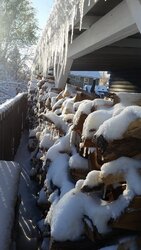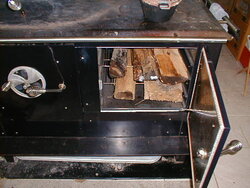This doesn't tell me much IMO other than its not dry enough overall and one end dried better than the other. I assume you are showing us a piece that was overhung and exposed to the elements hence its wet on the one end but did you keep track of which end is which? How does that piece compare to a piece that was in the top row fully covered and also how does it compare to a piece in the back row that was fully covered?
What if you find out the end that was overhung was the dryer end? Maybe sun exposure dried it better than the end inside the pile... Valid points?
Those could indeed be valid points but I'm going with the obvious.
The obvious part being that a metal roof is going to absorb sunlight and radiate as heat energy
drying the wood about the same as direct sunshine. The difference being it won't be rewet every
time there's a rain or slushy snow situation.
A good comparison would be a side by side test with a split from the back row as you mentioned.
In Blacktails defense, I'm guessing he's smart enough to keep track of which end faced out.
This group tends to look out for each other's safety, and we do our best to help one another out.
There's a good sense of comaradarie here and a common bond. What I've learned here has
quite possibly saved our lives concerning chimney safety, and I've added only the arenas
I'm educated in which is metallurgical (heat transfer) properties and fluid dynamics (air flow properties)
as gasses and fluids flow with very similar properties. That all came from 17 years in a foundry as
senior lab technician but I help wherever possible.
What if you joined this site only a day ago and are already looking to poke at peoples intelligence? Valid point?
Welcome to the site, and please see us for what we really are. An online family.
The gang cut me apart too before learning that my junk stove with a bad rep got completely rebuilt
and sealed, lined, and extra bricks added. They saw that safety was more important than just "cheap" heat. Then
they adopted me like a lost puppy and have been training me ever since. That's what we're about here @ Hearth.
CheapMark











